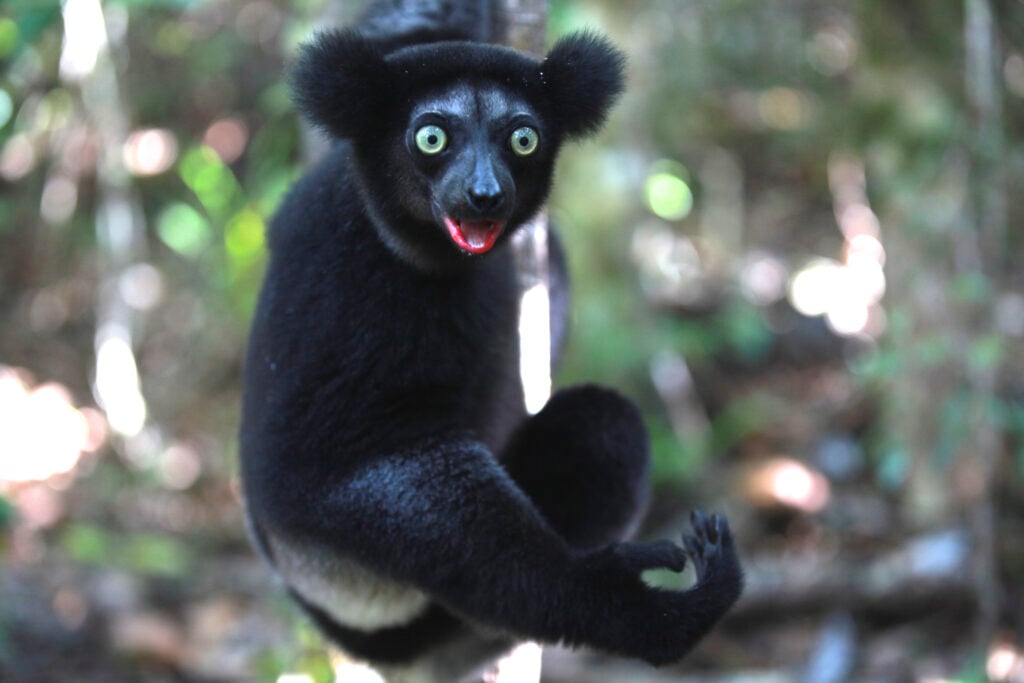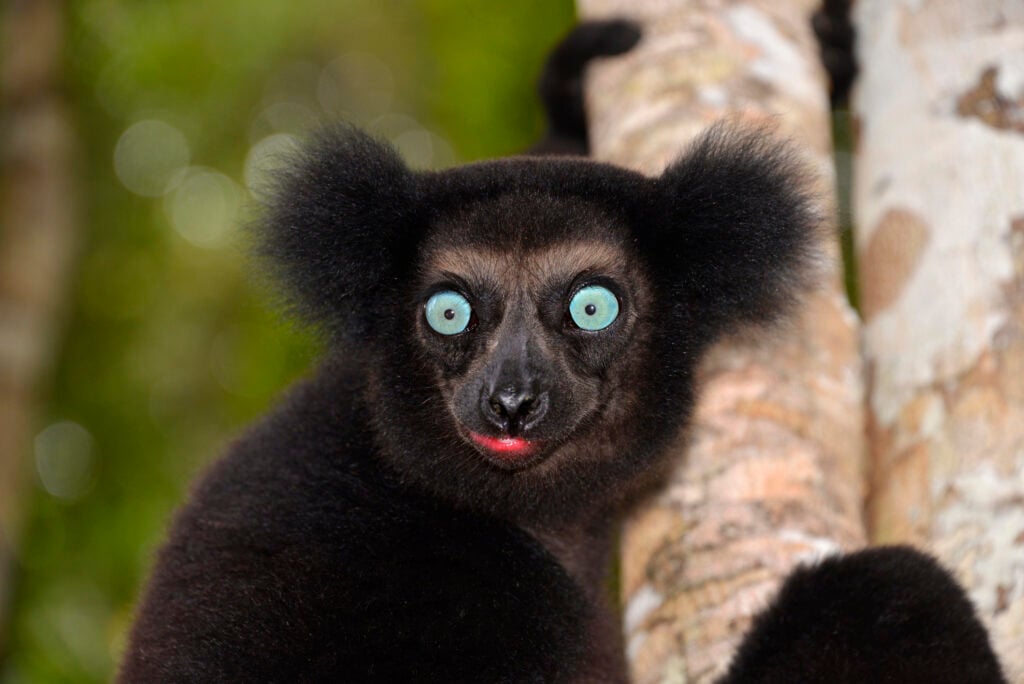Meet the indri lemur, also known as a babakoto. This funny-looking creature is the largest lemur in the world and sadly it’s critically endangered.
Their size is only part of what makes the indri so special. They are known for their distinctive cries, which vary in length and pitch, but repeat sounds to form tunes, meaning these lemurs have rhythm.

If you’re reading this, the chances are you are both a human and familiar with the idea of rhythm. The dictionary definition of the latter is “a strong, regular repeated pattern of movement or sound”, and while we now know it to have a slightly broader meaning, the indri lemurs on the island of Madagascar are the only mammal to demonstrate repeated patterns of sound – i.e: they’re the only other mammal with rhythm.
Read More: The giant technicolor squirrels living in the forests of India
Like all lemurs, the idri is native to Madagascar. If you are lucky enough to go and see one for yourself, you will probably hear it first, as their cries can be heard from more than a mile away. It is a high-pitched, rather haunting noise that is unique to the Madagascan forest. Have a listen for yourself below.
Indris live in family groups and the songs help them communicate. They often sing together, in harmonies, parents forming duets and then the offspring joining in. To an untrained ear, they can appear chaotic and random (and arguably unpleasant), but extensive studies have shown that the indris’ song is deliberate, and according to bio-musicologist Andrea Ravignani, “hauntingly beautiful”.
A recent study involving Ravignani analyzed 636 different indri recordings from over 20 different families, as they attempted to ascertain if the indri knew what they were doing. The evidence was overwhelming, according to biologist Chiara De Gregorio, who was also working on the study. Speaking to Scientific American, she said: “When you get used to them, you can really recognize a pattern in those songs. When they start a phrase, you know what to expect, note after note.”

The study found that the lemurs’ tune matched two kinds of rhythmic categories: 1:1 and 1:2. It further found that when indris sing, they gradually decrease their tempo – a quality known as ritardando in musical terms.
Interestingly, both male and female indris showed categorical rhythms but their tempo differed, suggesting that their songs are to communicate rather than show off as occurs in other “mating calls” around the animal kingdom.

“Maybe also in our species, rhythm did not evolve under sexual selection pressure, but rather for group bonding purposes,” Ravignani said.
This seems more plausible than a shared evolutionary explanation for how both species developed the common trait of understanding rhythm. After all, it is estimated that the small number of 77.5 million years have passed since the common ancestor of humans and indris existed. This makes it highly unlikely that rhythm is an ancestral trait, and is rather something learned separately.





